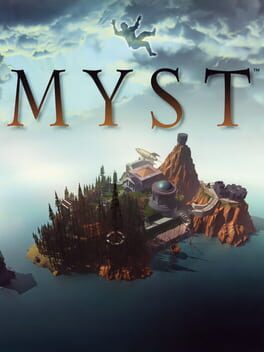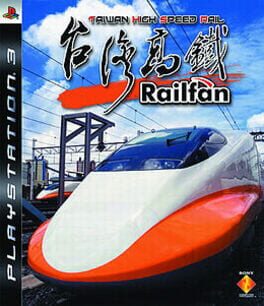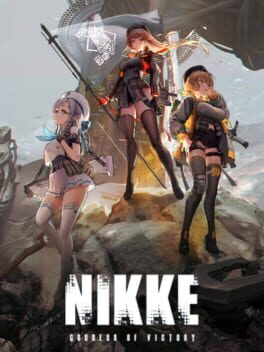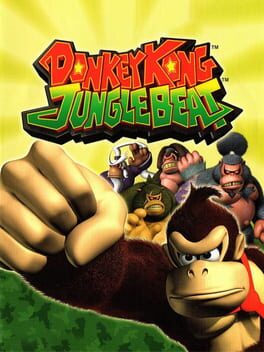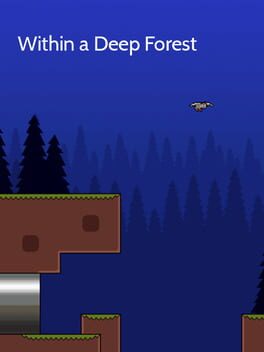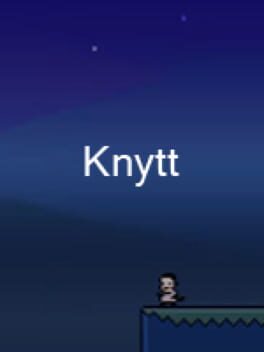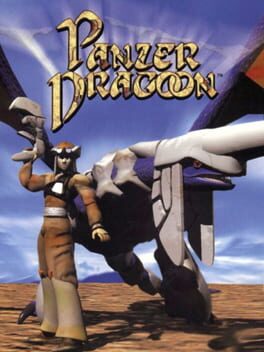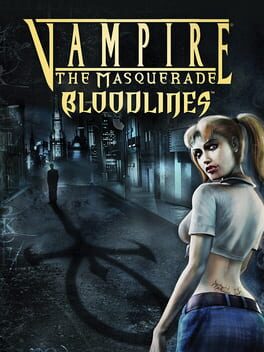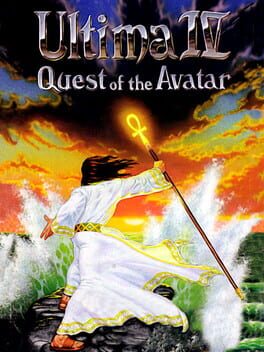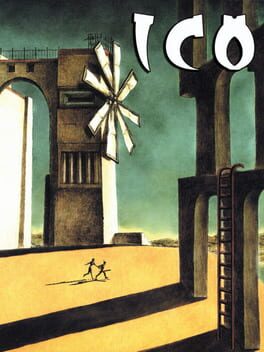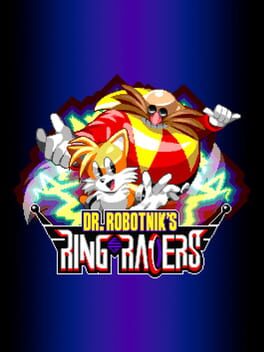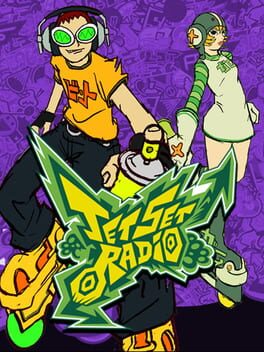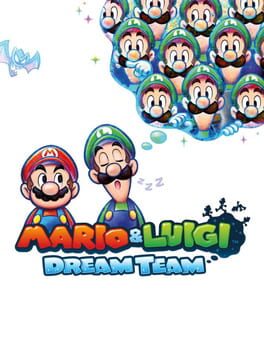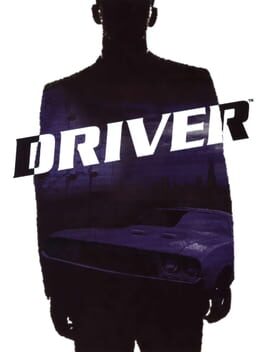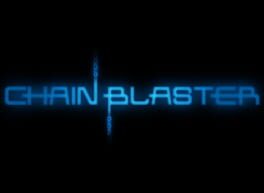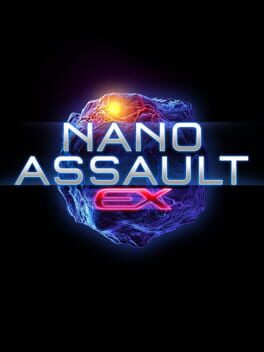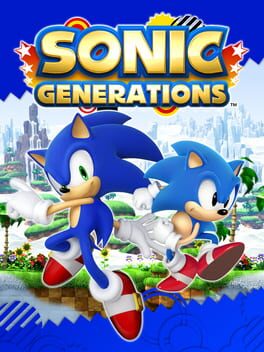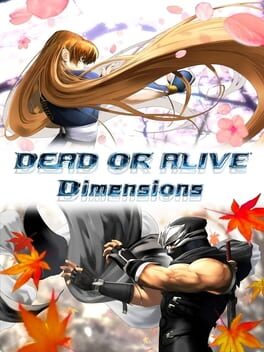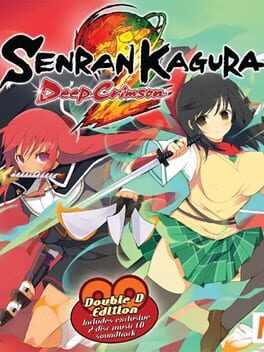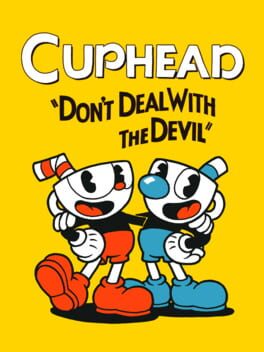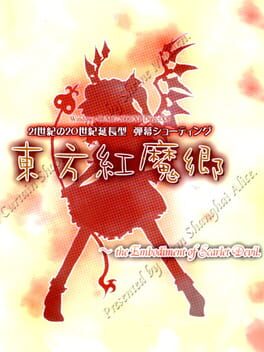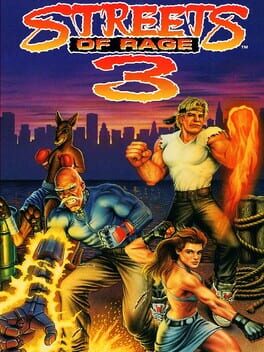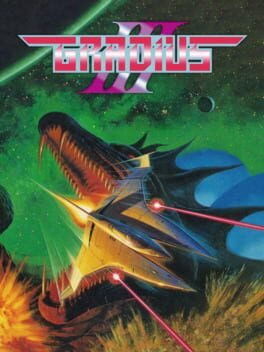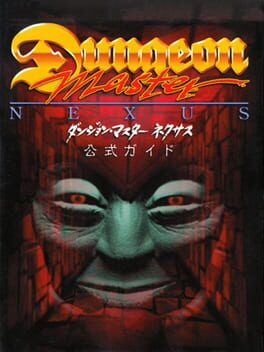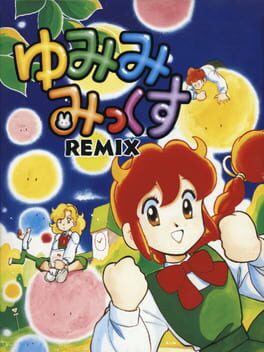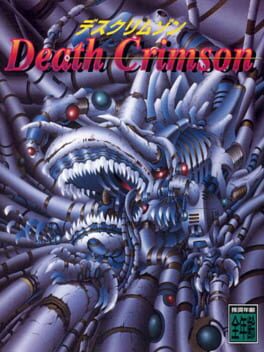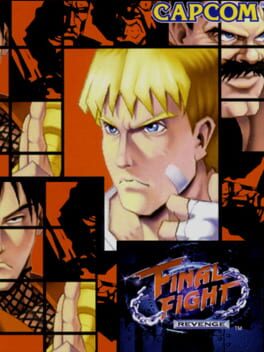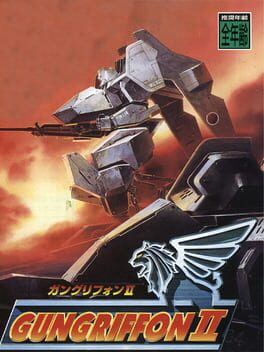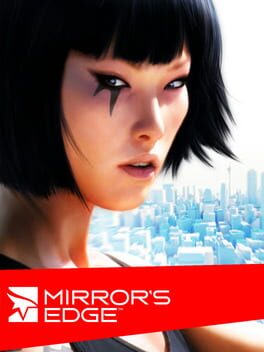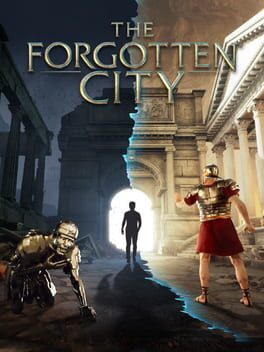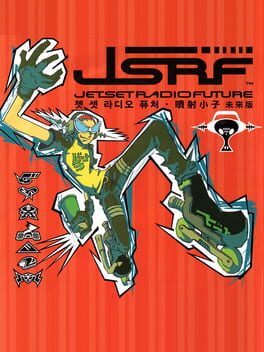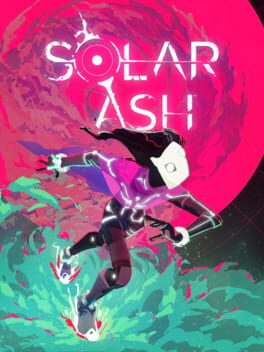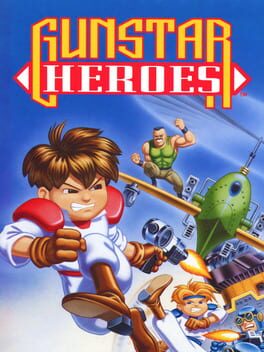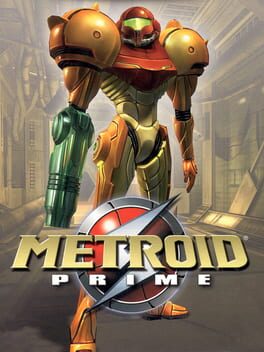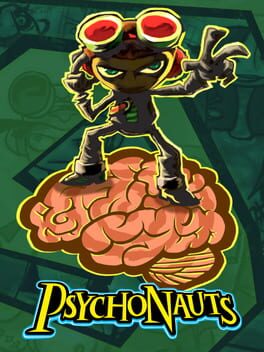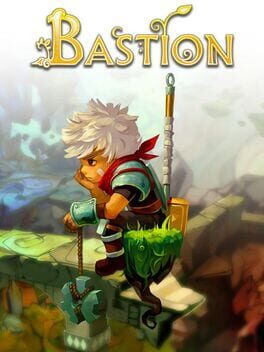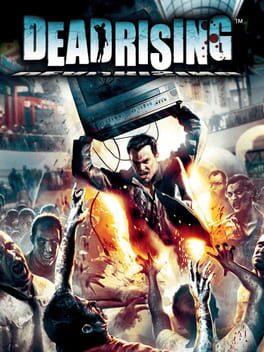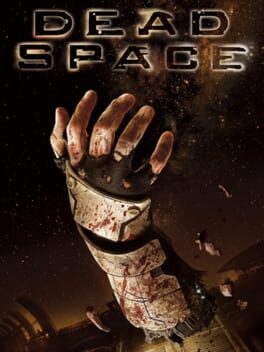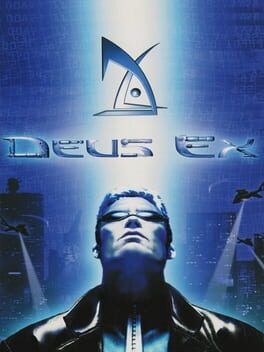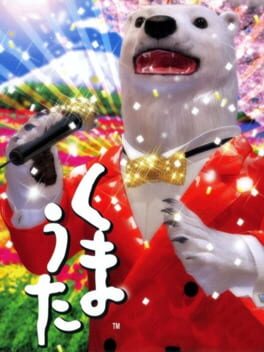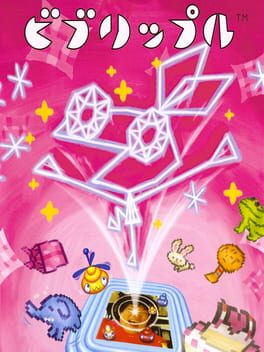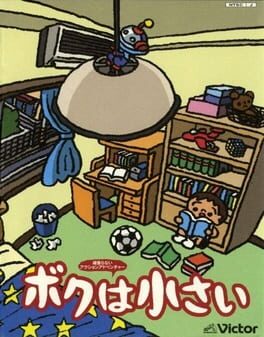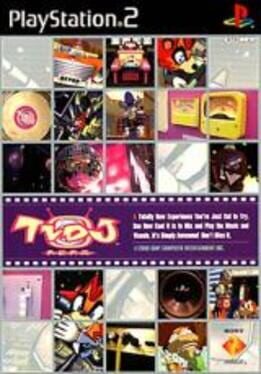SlapOnToast
1141 reviews liked by SlapOnToast
Myst
1993
Behold, my 1500th video game! This special occasion warrants nothing less than a super special review. So, what did I think? Well first, some backstory.
This past year or 2, I've been obsessed with playing games that are considered foundational. Sometimes, I don't enjoy them but I'm still glad I played them for the historical value alone which has been the case for games such as Colossal Cave Adventure, Mystery House, or Portopia. Other times, I find some of my unexpected favourite games that are actually very fun such as Wizardry, Fantasy Zone, or... oh yeah, another game by Myst's developers called The Manhole!
When I played The Manhole and its 3D remake last year, I was very captivated! These are 2 games where there is no real objective but to take in the scenery. Just explore and find hilarious imagery while listening to wacky characters. No win condition, no lose condition, no timer, no stress. In a way, this is a really avant garde method of showing that video games are more than their title suggests. That being, they aren't just "games" played for the sake of winning but perhaps important pieces of art.
With how hyped up Myst has been over the years, I decided I would make it my 1500th game on Backloggd (Jesus I've been on this site for years) knowing that it would be something special and, well....
Look. I immensely respect what Myst is going for. I really love how inspired it is, and I am sure the pre-rendered graphics were mindblowing to 1993 audiences. It's neat how several of my beloved games such as Drowned God were blatantly inspired by it, and it's arguably the most important game in the last 30 or so years due to how it was the big boom for PC gaming the world needed.
Yet, I can't feel passionately about it the way I can with The Manhole or Wizardry or even the likes of Colossal Cave Adventure. It is hard for me to be captivated by Myst's legacy when many point and click/adventure games predate it and, in my opinion, have far better QOL, gameplay, and storytelling.
As far as point and click games from before 1993 go, I have a lot of favourites. Uninvited felt like a very kinetic and replayable game with a unique horror feel. Monkey Island 1-2 are still some of the most entertaining and hilarious games I've experienced, boasting incredible artstyles and early popularization of dynamic music. The Manhole, again, was one of the very first entertainment CD-roms and it's still rather fun. Alter Ego having barely any pictures and still being one of the most engaging, deeply written games I've experienced. Hell, when looking at niche Japanese games I'm impressed at how Cosmology of Kyoto, Otogirisou, or Ihatovo Monogatari managed to breathe new life into the game medium as a whole, displaying such artistry that even the likes of Roger Ebert were impressed.
All this is to say that I don't understand at all why Myst is often defended on the basis of "well it's a 30 year old game" especially when other point-and-clicks like Monkey Island before it are still popular today. Hell, Monkey Island is probably much more fun to revisit for the average player. Monkey Island doesn't receive memes like this, at least certainly not with any frequency https://pbs.twimg.com/media/E9tXrGBWYAYBtfc.png
When trying to wrap my head around what made Myst so popular beyond the graphics, I looked at the development history behind the game and found this https://youtu.be/EWX5B6cD4_4
Myst was meant to give players a bang for their buck, resulting in a design based around "brute force" real estate to explore. With no win or lose conditions, the player could feasibly spend weeks if not months on the game. And it doesn't stop there, there is what seems to be a deliberate lack of QOL.
I found myself constantly frustrated by Myst. The save feature restarts the player at the beginning of the area rather than saving their progress, contrary to other even older adventure games. Batteries near the dock drain rather fast and need to be constantly recharged. Activating the large tree elevator is an annoying process. The main character is too much of a moron to carry two pages at a time, so if the player wants to experience every FMV they are forced to go through the same area twice, some of which can be rather confusing to navigate. The sound puzzles where the player must match 5 different sound effects in a row with very large margin of error might as well just say "fuck the deaf and the tone deaf players" good lord. I personally felt the pace broken when 10 minutes into the game I was compelled to read 4 mini-novels in a row. And perhaps most importantly, I had trouble making out a single full sentence in the red and blue books due to the overloaded static noises in the cutscenes.
Are there things I appreciate about Myst? Sure! This is far from a game without merit. The minimalist presentation is rather beautiful, with the pre-rendered images and FMVs still holding their own against photorealistic graphics from far stronger hardware. The atmosphere can be rather immersive a lot of the time, with the sound effects being very convincing for every action in the game. I rec listening to this part of the Ars Technica documentary, since it explains things better than I could https://youtu.be/EWX5B6cD4_4?t=860
It's truly a technical engineering feat. Also, after the player obtains the true ending, they are allowed to just explore the island. It really gives me the impression their earlier work on The Manhole helped shape some decisions in this game, and that's just lovely.
Well, that's Myst. It's a technically impressive game, but far from a fun one in my opinion. It was only while writing this review that, perhaps, it hit me.
Everybody has their own unique perspective and experiences that shapes them into the EPIC GAMER they are today. I saved Myst for a rainy day, subconsciously putting it on a pedestal in my head. Most of the people who told me how much they loved Myst mentioned it being a formative artistic experience for them. Could it be because I had the liberty of playing so many untranslated JP adventure games, more modern adventure games, and so forth before Myst, its impact was lost on me?
1500 games is a lot of fucking games. There is an alternate universe out there where I was fascinated by Myst and fell in love with it, rather than found it frustrating in my mid 20s. In fact, this is what one of the developers theorized; only maybe half of players even left the first island. Yet, so many young players who discovered the game left with quite an impression, that they played something which resonated with them FOR the unfamiliar mystique, rather than despite it https://youtu.be/EWX5B6cD4_4?t=1070
When I started typing this review, I wasn't sure if I was happy I played Myst. Yet now, I feel confident I am happy it was my 1500th game. It was not a waste of time, but a good reminder of how games are more than what I play. They are artistic statements, impressive feats of software development, and parts of our culture. The cynic in me can say Myst is a subpar adventure game that only had any success due to the photorealistic graphics. Yet, I'm more inclined to ask one thing:
Is there any game which better embodies the culture of early PC gaming and the appeal of pre-rendered graphics?
God, I fucking love video games.
https://www.youtube.com/watch?v=e49OXXBX3Ko
This past year or 2, I've been obsessed with playing games that are considered foundational. Sometimes, I don't enjoy them but I'm still glad I played them for the historical value alone which has been the case for games such as Colossal Cave Adventure, Mystery House, or Portopia. Other times, I find some of my unexpected favourite games that are actually very fun such as Wizardry, Fantasy Zone, or... oh yeah, another game by Myst's developers called The Manhole!
When I played The Manhole and its 3D remake last year, I was very captivated! These are 2 games where there is no real objective but to take in the scenery. Just explore and find hilarious imagery while listening to wacky characters. No win condition, no lose condition, no timer, no stress. In a way, this is a really avant garde method of showing that video games are more than their title suggests. That being, they aren't just "games" played for the sake of winning but perhaps important pieces of art.
With how hyped up Myst has been over the years, I decided I would make it my 1500th game on Backloggd (Jesus I've been on this site for years) knowing that it would be something special and, well....
Look. I immensely respect what Myst is going for. I really love how inspired it is, and I am sure the pre-rendered graphics were mindblowing to 1993 audiences. It's neat how several of my beloved games such as Drowned God were blatantly inspired by it, and it's arguably the most important game in the last 30 or so years due to how it was the big boom for PC gaming the world needed.
Yet, I can't feel passionately about it the way I can with The Manhole or Wizardry or even the likes of Colossal Cave Adventure. It is hard for me to be captivated by Myst's legacy when many point and click/adventure games predate it and, in my opinion, have far better QOL, gameplay, and storytelling.
As far as point and click games from before 1993 go, I have a lot of favourites. Uninvited felt like a very kinetic and replayable game with a unique horror feel. Monkey Island 1-2 are still some of the most entertaining and hilarious games I've experienced, boasting incredible artstyles and early popularization of dynamic music. The Manhole, again, was one of the very first entertainment CD-roms and it's still rather fun. Alter Ego having barely any pictures and still being one of the most engaging, deeply written games I've experienced. Hell, when looking at niche Japanese games I'm impressed at how Cosmology of Kyoto, Otogirisou, or Ihatovo Monogatari managed to breathe new life into the game medium as a whole, displaying such artistry that even the likes of Roger Ebert were impressed.
All this is to say that I don't understand at all why Myst is often defended on the basis of "well it's a 30 year old game" especially when other point-and-clicks like Monkey Island before it are still popular today. Hell, Monkey Island is probably much more fun to revisit for the average player. Monkey Island doesn't receive memes like this, at least certainly not with any frequency https://pbs.twimg.com/media/E9tXrGBWYAYBtfc.png
When trying to wrap my head around what made Myst so popular beyond the graphics, I looked at the development history behind the game and found this https://youtu.be/EWX5B6cD4_4
Myst was meant to give players a bang for their buck, resulting in a design based around "brute force" real estate to explore. With no win or lose conditions, the player could feasibly spend weeks if not months on the game. And it doesn't stop there, there is what seems to be a deliberate lack of QOL.
I found myself constantly frustrated by Myst. The save feature restarts the player at the beginning of the area rather than saving their progress, contrary to other even older adventure games. Batteries near the dock drain rather fast and need to be constantly recharged. Activating the large tree elevator is an annoying process. The main character is too much of a moron to carry two pages at a time, so if the player wants to experience every FMV they are forced to go through the same area twice, some of which can be rather confusing to navigate. The sound puzzles where the player must match 5 different sound effects in a row with very large margin of error might as well just say "fuck the deaf and the tone deaf players" good lord. I personally felt the pace broken when 10 minutes into the game I was compelled to read 4 mini-novels in a row. And perhaps most importantly, I had trouble making out a single full sentence in the red and blue books due to the overloaded static noises in the cutscenes.
Are there things I appreciate about Myst? Sure! This is far from a game without merit. The minimalist presentation is rather beautiful, with the pre-rendered images and FMVs still holding their own against photorealistic graphics from far stronger hardware. The atmosphere can be rather immersive a lot of the time, with the sound effects being very convincing for every action in the game. I rec listening to this part of the Ars Technica documentary, since it explains things better than I could https://youtu.be/EWX5B6cD4_4?t=860
It's truly a technical engineering feat. Also, after the player obtains the true ending, they are allowed to just explore the island. It really gives me the impression their earlier work on The Manhole helped shape some decisions in this game, and that's just lovely.
Well, that's Myst. It's a technically impressive game, but far from a fun one in my opinion. It was only while writing this review that, perhaps, it hit me.
Everybody has their own unique perspective and experiences that shapes them into the EPIC GAMER they are today. I saved Myst for a rainy day, subconsciously putting it on a pedestal in my head. Most of the people who told me how much they loved Myst mentioned it being a formative artistic experience for them. Could it be because I had the liberty of playing so many untranslated JP adventure games, more modern adventure games, and so forth before Myst, its impact was lost on me?
1500 games is a lot of fucking games. There is an alternate universe out there where I was fascinated by Myst and fell in love with it, rather than found it frustrating in my mid 20s. In fact, this is what one of the developers theorized; only maybe half of players even left the first island. Yet, so many young players who discovered the game left with quite an impression, that they played something which resonated with them FOR the unfamiliar mystique, rather than despite it https://youtu.be/EWX5B6cD4_4?t=1070
When I started typing this review, I wasn't sure if I was happy I played Myst. Yet now, I feel confident I am happy it was my 1500th game. It was not a waste of time, but a good reminder of how games are more than what I play. They are artistic statements, impressive feats of software development, and parts of our culture. The cynic in me can say Myst is a subpar adventure game that only had any success due to the photorealistic graphics. Yet, I'm more inclined to ask one thing:
Is there any game which better embodies the culture of early PC gaming and the appeal of pre-rendered graphics?
God, I fucking love video games.
https://www.youtube.com/watch?v=e49OXXBX3Ko
Taipei ➡️ Zuoying (Kaohsiung City)
Duration: 01h34
Train Model: THSR 700T
Train No: 0145
Number of carriages: 12 (1 business car, 11 standard cars)
Number of seats: 989 (66 seats in business car, 923 seats in standard cars)
Seat allocation: 2+2 in business car (4 seats each row); 2+3 in standard car (5 seats each row)
Top operation speed: 300 km/hr
Length of train: 304 m
Electric system: 25 KV 60 Hz AC
Welcome aboard Taiwan High Speed Rail! This train is bound from Taipei, to Zuoying. All seats are reserved. Please make sure you are in the correct seat. We wish you a pleasant journey. 🌸
Slim but unquestionably reverent and adorable. Maybe I'm gassing this up too much but it's nice to see the Trainguy subgenre have a little more meat on its bones beyond polygonal simulations and instead could be secret FMV games - accelerating and decelerating your train like it's a really meditative Superhot or something. Railfan seems very keen to show you a brief look into late-00's rail transit life, right down to explaining the historicity of the locales the line calls at, the specs of the train, even local cuisine!
Looking up the devs of the Railfan titles to find that they are predominantly dedicated to educative tactile train driving simulations, still making use of full-motion video rather than computer generated sims. I dunno man I think that's neat. I've seen people with the Densha de Go joystick but now I want a carriage door peripheral for me to lean out of.
Duration: 01h34
Train Model: THSR 700T
Train No: 0145
Number of carriages: 12 (1 business car, 11 standard cars)
Number of seats: 989 (66 seats in business car, 923 seats in standard cars)
Seat allocation: 2+2 in business car (4 seats each row); 2+3 in standard car (5 seats each row)
Top operation speed: 300 km/hr
Length of train: 304 m
Electric system: 25 KV 60 Hz AC
Welcome aboard Taiwan High Speed Rail! This train is bound from Taipei, to Zuoying. All seats are reserved. Please make sure you are in the correct seat. We wish you a pleasant journey. 🌸
Slim but unquestionably reverent and adorable. Maybe I'm gassing this up too much but it's nice to see the Trainguy subgenre have a little more meat on its bones beyond polygonal simulations and instead could be secret FMV games - accelerating and decelerating your train like it's a really meditative Superhot or something. Railfan seems very keen to show you a brief look into late-00's rail transit life, right down to explaining the historicity of the locales the line calls at, the specs of the train, even local cuisine!
Looking up the devs of the Railfan titles to find that they are predominantly dedicated to educative tactile train driving simulations, still making use of full-motion video rather than computer generated sims. I dunno man I think that's neat. I've seen people with the Densha de Go joystick but now I want a carriage door peripheral for me to lean out of.
On release, Wonder was quickly crowned the new king of the 2D Mario series by legions of folks who’d been burned deeply by the New Super Mario Bros. tetrology's shallow and uninspired aesthetic. I was there. I’ve played all of these games. 2D Mario games are important enough to me that I will play them on a TV, even if it means passers-by can look in and clearly tell that I’m not filing my tax returns. I finished Wonder with 100% completion on the weekend of October 20th, 2023 (unless you count the standees. I don’t). I’ve replayed all of its levels at least twice, with and without grabbing each Wonder Flower. You know I like this game a heck of a lot. Nevertheless, I’ve got a lot to say, not all of it good. This is gonna sound a bit dry.
On Super Mario Bros. Wonder (OR — "No Country for New Super Mario Bros.")
Visually, Wonder is closer to my Dream Mario than any other this side of Yoshi’s Island, and I do hope the next one commits even harder to the cartoonishness of this aesthetic. My first impression was that it had the best control of any game in the 2D series, and in most respects, I do still believe that. The “New” games carried with them this lumbering heaviness that I’m glad we’ve shed away. The Elephant power-up is a bit undercooked, but the other two additions appropriately shake up the player's relationship with enemies and the environment. Just being able to jump into enemies from below while at a full sprint makes the Drill a treat, even without considering its burrowing ability. The removal of a flight-based power was likely due to multiplayer, but in principle, it helps the game stay centered squarely on running and jumping, and encourages creative use of the Bubble Flower (which, yes, is more or less a retooled Bubble Yoshi from off of NSMBU). The Demon’s Souls online feature is welcome; I didn’t see myself playing as a guardian angel in a Mario game, but here we are. Badges are a solid addition too, especially for newcomers. I can play as Daisy. Awesome stuff. Promising. Shame that, to my taste, there’s a lot left on the table here.
Every stage of this game locks its enemies and visuals and stage gimmicks down almost completely; you’re not likely to see much crossover. There’s one rolla-koopa stage, one hoppycat stage, one condart stage. These guys are stuck in their zones. It results in an impressive level of variety, but also prevents the game from meaningfully building on concepts from stage to stage. You don’t get that blending of flavors you’ll find in the series’ earliest entries. In this respect, it’s arguably even more formulaic than the games it’s trying to subvert. Each level’s gimmicks undergo a similar arc before being put away, each of them with a Wonder Flower to find which activates a minigame or setpiece. Nothing so plain as the well-documented and scientifically-proven "Four Step Level Design" of New Super Mario Bros., they just remembered to add the sugar. Would people still be talking about Mario 3's Angry Sun if you had to pop a regularly-mandated Wonder Flower to activate it? I don’t think it helps that these stages are threaded together as loosely as they are.
Playing into its save feature, Super Mario World invited its players to revisit levels for alternate exits and hidden secrets. Wonder doubles down on that attitude, with a wide-open map and only a single file per user. You’re meant to dig around in these levels and scour the world, but there isn’t really a whole lot to find. Yes, there are large coins to collect, tops of flagpoles to grab, but – and I hate to grumble – these pale in comparison to the discovery of warp zones, unique power-ups, and routes which alter the trajectory of a playthrough. I think they’d have been better off hiding badges within full stages than keeping them in shops or bespoke levels on the overworld. I’m of the opinion that collectibles should feel immediately tangible and exciting. Wonder sidesteps the checklist school of design for the most part, but I’d like to see it drop outta these games completely.
Here's what I'm getting at – I don’t think Wonder is adept at curating its adventure, and I don’t get the impression that its developers made that a priority. There’s a sort of halfhearted effort to add a single story beat to each world, and it's unconvincing. Possible plants just don't tend to pay off. The talking flowers never do. Stages are clustered together with respect to difficulty and theming, but any pretense of a “flow” between them, that levels together form an arc, is rarely suggested. A level is an island unto itself. It’s because the game isn’t concerned with its own replayability, actively obfuscating the option to start a New Game. It’s because Wonder isn’t all that interested in blending ideas between stages. It’s because the “Wonder” gimmick, ironically, requires each level to follow the same general beats.
I came for an album, and what I got was a collection of singles. They’re good, even great singles, but I don’t think it comes together as a whole game in the same way each of the old classics did. I hope Wonder is a sign that Nintendo is open to getting even more experimental with the conventions of this series (maybe cut out the world map next time, have one continuous game of back-to-back platforming levels), and I’m glad it was well received. You can feel those seasoned designers stretching their legs with this one — it beats out the New Super Marios on charm factor alone — and I squeezed every last drop I could out of it. I believe greater heights are within reach for this series, but if this is the last for a while, I'll still be more than appreciative that Wonder got its moment in the spotlight.
(...if you'd like to see where this falls on my list of the Thirty-Five Best Games I Played in 2023, you can check it out here. Thanks for reading!)
On Super Mario Bros. Wonder (OR — "No Country for New Super Mario Bros.")
Visually, Wonder is closer to my Dream Mario than any other this side of Yoshi’s Island, and I do hope the next one commits even harder to the cartoonishness of this aesthetic. My first impression was that it had the best control of any game in the 2D series, and in most respects, I do still believe that. The “New” games carried with them this lumbering heaviness that I’m glad we’ve shed away. The Elephant power-up is a bit undercooked, but the other two additions appropriately shake up the player's relationship with enemies and the environment. Just being able to jump into enemies from below while at a full sprint makes the Drill a treat, even without considering its burrowing ability. The removal of a flight-based power was likely due to multiplayer, but in principle, it helps the game stay centered squarely on running and jumping, and encourages creative use of the Bubble Flower (which, yes, is more or less a retooled Bubble Yoshi from off of NSMBU). The Demon’s Souls online feature is welcome; I didn’t see myself playing as a guardian angel in a Mario game, but here we are. Badges are a solid addition too, especially for newcomers. I can play as Daisy. Awesome stuff. Promising. Shame that, to my taste, there’s a lot left on the table here.
Every stage of this game locks its enemies and visuals and stage gimmicks down almost completely; you’re not likely to see much crossover. There’s one rolla-koopa stage, one hoppycat stage, one condart stage. These guys are stuck in their zones. It results in an impressive level of variety, but also prevents the game from meaningfully building on concepts from stage to stage. You don’t get that blending of flavors you’ll find in the series’ earliest entries. In this respect, it’s arguably even more formulaic than the games it’s trying to subvert. Each level’s gimmicks undergo a similar arc before being put away, each of them with a Wonder Flower to find which activates a minigame or setpiece. Nothing so plain as the well-documented and scientifically-proven "Four Step Level Design" of New Super Mario Bros., they just remembered to add the sugar. Would people still be talking about Mario 3's Angry Sun if you had to pop a regularly-mandated Wonder Flower to activate it? I don’t think it helps that these stages are threaded together as loosely as they are.
Playing into its save feature, Super Mario World invited its players to revisit levels for alternate exits and hidden secrets. Wonder doubles down on that attitude, with a wide-open map and only a single file per user. You’re meant to dig around in these levels and scour the world, but there isn’t really a whole lot to find. Yes, there are large coins to collect, tops of flagpoles to grab, but – and I hate to grumble – these pale in comparison to the discovery of warp zones, unique power-ups, and routes which alter the trajectory of a playthrough. I think they’d have been better off hiding badges within full stages than keeping them in shops or bespoke levels on the overworld. I’m of the opinion that collectibles should feel immediately tangible and exciting. Wonder sidesteps the checklist school of design for the most part, but I’d like to see it drop outta these games completely.
Here's what I'm getting at – I don’t think Wonder is adept at curating its adventure, and I don’t get the impression that its developers made that a priority. There’s a sort of halfhearted effort to add a single story beat to each world, and it's unconvincing. Possible plants just don't tend to pay off. The talking flowers never do. Stages are clustered together with respect to difficulty and theming, but any pretense of a “flow” between them, that levels together form an arc, is rarely suggested. A level is an island unto itself. It’s because the game isn’t concerned with its own replayability, actively obfuscating the option to start a New Game. It’s because Wonder isn’t all that interested in blending ideas between stages. It’s because the “Wonder” gimmick, ironically, requires each level to follow the same general beats.
I came for an album, and what I got was a collection of singles. They’re good, even great singles, but I don’t think it comes together as a whole game in the same way each of the old classics did. I hope Wonder is a sign that Nintendo is open to getting even more experimental with the conventions of this series (maybe cut out the world map next time, have one continuous game of back-to-back platforming levels), and I’m glad it was well received. You can feel those seasoned designers stretching their legs with this one — it beats out the New Super Marios on charm factor alone — and I squeezed every last drop I could out of it. I believe greater heights are within reach for this series, but if this is the last for a while, I'll still be more than appreciative that Wonder got its moment in the spotlight.
(...if you'd like to see where this falls on my list of the Thirty-Five Best Games I Played in 2023, you can check it out here. Thanks for reading!)
Everyone be talking about fat asses n shit so I gave it a shot. Pulled this character that was just phenomenal from the front, hot as hell. Upgraded her a few times, stuck her in my party and rushed to see her in action. I get into a mission, start shooting, and guess what I find? She's wearing a massive fucking lab coat, I can't see anything from the back. I took that as a grim omen of what was to come; broken promises and abject disappointments, and I uninstalled the game on the spot.
The only game that lets you beat up animals by actually hitting something IRL
DK Jungle Beat is my favorite use of a weird controller. It hearkens back to the simplicity of the two-button NES controller while simultaneously feeling ABSOLUTELY NOTHING like an NES controller.
You tap one Bongo to run in that direction, tap both to jump, and clap to attack. Once you've latched onto any enemy by clapping, you start pounding away like your 5th grade teacher just asked for a "drum roll" on your desks.
Simple. Visceral. Percussive.
The boss fights are awfully similar to classic samurai battles. The principle of these showdowns is to wait for the right opportunity to strike, and to not jump the gun. The boss battles have a real dramatic weight and tension to them, and they're a highlight.
Like Ōdama, this is weird Gamecube-era Nintendo at its finest.
DK Jungle Beat is my favorite use of a weird controller. It hearkens back to the simplicity of the two-button NES controller while simultaneously feeling ABSOLUTELY NOTHING like an NES controller.
You tap one Bongo to run in that direction, tap both to jump, and clap to attack. Once you've latched onto any enemy by clapping, you start pounding away like your 5th grade teacher just asked for a "drum roll" on your desks.
Simple. Visceral. Percussive.
The boss fights are awfully similar to classic samurai battles. The principle of these showdowns is to wait for the right opportunity to strike, and to not jump the gun. The boss battles have a real dramatic weight and tension to them, and they're a highlight.
Like Ōdama, this is weird Gamecube-era Nintendo at its finest.
Goddamn I have never felt like an absolute APE banging on drums like a bloody raged gorilla. This brought out an inner PRIMEPAE dormant within my soul. One of the best stress relieving games I have played.
DKJB is definitely one of those games you NEED the bongo peripheral is was made for. The option to play with a controller is there, but you'd be absolutely robbing yourself of one of the most amazing experiences on the gamecube. Or at least, try to find way to play the wii motion control version, even if you are playing on an emulator, please hook up some sort of motion control gimmick to make this game what it's worth.
It is a platfomer that is controlled by banging the bongos. Bang the left bongo, go left. Bang the right bongo, go right. Bang both at the same time and you do a jump. Clap to grab and punch things. Simple and it works because it's so satisfying when translated to gameplay.
There are 32 very fun levels that have you running, sliding, bouncing and swinging all around while keeping combos up. The name of the game is to collect as many bananas as you can till you get to the end of the level. The more combos you keep up by not touching the ground, the more bananas collected will multiply. The more bananas you have collected, the more health you will have when facing the boss at the end of the level. A really good system that rewards you with medals depending on the amount of bananas you have, thus creating a great replayable game.
One of my favorite things about this game is fighting all the enemies, especially the big one. Every enemy you defeat feels so goddamn satisfying as you grab, throw or pound the fuck out of them. ESPECIALLY the bosses as when you stun them, you get to go all in 1000 punches first of the north star style, and the faster you bang those bongos, the faster DK will beat the shit out of the fuck. And it feels SOOOO goddamn good.
This is truly one of the most unique games I have played, and offers a great experience you can't get anywhere else. This deserves some kind of port on the switch so people can play with the joycons with that HD rumble doing it justice.
DKJB is definitely one of those games you NEED the bongo peripheral is was made for. The option to play with a controller is there, but you'd be absolutely robbing yourself of one of the most amazing experiences on the gamecube. Or at least, try to find way to play the wii motion control version, even if you are playing on an emulator, please hook up some sort of motion control gimmick to make this game what it's worth.
It is a platfomer that is controlled by banging the bongos. Bang the left bongo, go left. Bang the right bongo, go right. Bang both at the same time and you do a jump. Clap to grab and punch things. Simple and it works because it's so satisfying when translated to gameplay.
There are 32 very fun levels that have you running, sliding, bouncing and swinging all around while keeping combos up. The name of the game is to collect as many bananas as you can till you get to the end of the level. The more combos you keep up by not touching the ground, the more bananas collected will multiply. The more bananas you have collected, the more health you will have when facing the boss at the end of the level. A really good system that rewards you with medals depending on the amount of bananas you have, thus creating a great replayable game.
One of my favorite things about this game is fighting all the enemies, especially the big one. Every enemy you defeat feels so goddamn satisfying as you grab, throw or pound the fuck out of them. ESPECIALLY the bosses as when you stun them, you get to go all in 1000 punches first of the north star style, and the faster you bang those bongos, the faster DK will beat the shit out of the fuck. And it feels SOOOO goddamn good.
This is truly one of the most unique games I have played, and offers a great experience you can't get anywhere else. This deserves some kind of port on the switch so people can play with the joycons with that HD rumble doing it justice.
Sonic CD
1993
Within a Deep Forest
2006
Crazy how one of the best video game soundtracks of all time is hidden away in an obscure freeware Metroidvania from 2006.
I first played this when I was about 10, before I even had an internet connection. Found it on a weird CD with a bunch of random games (used to be quite common in Slovakia) and I've been returning to it basically every year.
An absolute masterclass in ambience, sound design and just general vibes. It's like the entire game was injected with a comically large syringe labeled "Childlike Wonder".
Every time I hear the Hub level music, I feel like that GIF of Anton Ego taking a bite of Ratatouille. Shit's magical. Makes me have an existential crisis over a bouncing ball.
I first played this when I was about 10, before I even had an internet connection. Found it on a weird CD with a bunch of random games (used to be quite common in Slovakia) and I've been returning to it basically every year.
An absolute masterclass in ambience, sound design and just general vibes. It's like the entire game was injected with a comically large syringe labeled "Childlike Wonder".
Every time I hear the Hub level music, I feel like that GIF of Anton Ego taking a bite of Ratatouille. Shit's magical. Makes me have an existential crisis over a bouncing ball.
Knytt
2006
Let's talk about strategy guides. It's no secret some games have very obtuse elements about them. Often times, they're not meant to be used in a first playthrough at all and are the kind of thing one would find out from Nintendo Power ages later. One example would be the Hadouken and Shoryuken in the Mega Man X games. Then there are secrets like the Lightsaber in Ico which nobody would ever find without a strategy guide, but the player probably wants to get on their first playthrough even if they don't necessarily need it.
And then you have games that can feel completely overwhelming or even unplayable without a strategy guide. I cannot even begin to name all the point-and-clicks and JRPGs filled to the brim with labyrinthine structures, permanently missable content, bugs or intended conditions that cause the player's save file to essentially become bricked, sidequests so hidden it took decades to find them, etc etc etc.
Knytt manages to be all of this. Knytt is nearly a brilliant game. When I started playing Knytt, I picked up all but 3 items blind in under an hour. At first, I thought it was a very soothing experience with an incredible atmosphere. The ambient music is shockingly amazing, and perfectly compliments the dark yet colourful world.
Unfortunately, as I neared the end of the game, I started growing increasingly frustrated. Too many platforms were lined up in such a way the player was only 1 pixel out of reach to entering a new path. It became hard to distinguish background characters from actual enemies. And then the worst part happened; I accidentally jumped into an invisible tile in the middle of nowhere that turned out to be an important warp zone.
Within minutes, my opinion of the game lowered from perhaps a 9/10 to a 7/10 at best. I'm not even certain if the last few powerups can be found without all the other warp zones I discovered in a speedrunning video, because there are no guides online. There is no communication to the player they are near an invisible tile, and the game's world is so massive it takes about 5 minutes to run across it in a straightish line. I did find some codes for the game on GameFAQs but I don't think the game itself communicates them anywhere either https://gamefaqs.gamespot.com/pc/937276-knytt/cheats
So what are we left with? A passionate and unique game that is ultimately too messy and unnecessarily obtuse for its own good. What could have been an all time classic PC metroidvania is bogged down by adhering to the "we need to sell strategy guides" school of thought despite it being a freeware indie game.
If the game looks up your alley, my suggestion is to look for how ever many items you can naturally find in about an hour with the searchlight feature, and then watch this speedrun to find the rest https://www.youtube.com/watch?v=Wmg_maTOSrs
Also worth noting, it is a 2006 PC game. It ran without any significant issues on my Windows 11 rig, but I did have to use Joy2Key for controller support and the fullscreen was a bit fucked in that it forced everything to my second monitor. It's nothing too inconvenient given how short the game is however.
And then you have games that can feel completely overwhelming or even unplayable without a strategy guide. I cannot even begin to name all the point-and-clicks and JRPGs filled to the brim with labyrinthine structures, permanently missable content, bugs or intended conditions that cause the player's save file to essentially become bricked, sidequests so hidden it took decades to find them, etc etc etc.
Knytt manages to be all of this. Knytt is nearly a brilliant game. When I started playing Knytt, I picked up all but 3 items blind in under an hour. At first, I thought it was a very soothing experience with an incredible atmosphere. The ambient music is shockingly amazing, and perfectly compliments the dark yet colourful world.
Unfortunately, as I neared the end of the game, I started growing increasingly frustrated. Too many platforms were lined up in such a way the player was only 1 pixel out of reach to entering a new path. It became hard to distinguish background characters from actual enemies. And then the worst part happened; I accidentally jumped into an invisible tile in the middle of nowhere that turned out to be an important warp zone.
Within minutes, my opinion of the game lowered from perhaps a 9/10 to a 7/10 at best. I'm not even certain if the last few powerups can be found without all the other warp zones I discovered in a speedrunning video, because there are no guides online. There is no communication to the player they are near an invisible tile, and the game's world is so massive it takes about 5 minutes to run across it in a straightish line. I did find some codes for the game on GameFAQs but I don't think the game itself communicates them anywhere either https://gamefaqs.gamespot.com/pc/937276-knytt/cheats
So what are we left with? A passionate and unique game that is ultimately too messy and unnecessarily obtuse for its own good. What could have been an all time classic PC metroidvania is bogged down by adhering to the "we need to sell strategy guides" school of thought despite it being a freeware indie game.
If the game looks up your alley, my suggestion is to look for how ever many items you can naturally find in about an hour with the searchlight feature, and then watch this speedrun to find the rest https://www.youtube.com/watch?v=Wmg_maTOSrs
Also worth noting, it is a 2006 PC game. It ran without any significant issues on my Windows 11 rig, but I did have to use Joy2Key for controller support and the fullscreen was a bit fucked in that it forced everything to my second monitor. It's nothing too inconvenient given how short the game is however.
Panzer Dragoon
1995
The first few minutes of Panzer Dragoon when your blue dragon majestically soars above the rippling water to the tune of Flight define a classic video game introduction that I doubt I will ever forget. A part of me expected the experience to be steadily downhill from there given the common complaints that I’ve heard, but to the game’s credit, it quickly established its defining hook and never let go. Panzer Dragoon was one of the first games to take total advantage of its 3D space, and it does so through its ability to rotate the player’s aim in 360 degrees. The catch is that while you can’t aim sideways/behind the dragon when looking forward, there’s a trade-off in that you can’t steer the dragon and change its mid-air position while in first-person aiming around the sides of/behind its body. As a result, there’s a precise science to swapping between these two camera modes. The macro never gets complex (shoot everything in sight while dodging and shooting down enemy attacks), but the micro is just involved enough to where there’s little downtime as you constantly peruse your surroundings and systematically pick off your foes. This is a game that wants the player to be aware of everything around them, and Team Andromeda was more than happy to let them soak in the sights given that the minimalist UI (simply consisting of a radar for spotting enemies and a player health bar) never really gets in the way. Even today, I find Panzer Dragoon to be an absolutely gorgeous game, and I can only imagine how people in 1995 felt playing this for the first time.
I’ve been warned that Panzer Dragoon’s difficulty can be a significant roadblock, but after a few playthroughs, I think it’s definitely conquerable. Besides mastering control of the player reticle/camera, players need to recognize when to utilize the homing laser lock-on (holding down the fire button) versus mashing to quickly fire the player’s handgun. The homing laser is great for getting rid of enemy swarms and easily targeting moving foes, while the handgun is a godsend for melting beefy mobs and bosses while sniping faraway targets that can’t be locked onto. In particular, Episode 3’s jumping ship boss is a notable chump check if you refuse to lock-on, while Episode 5’s airships will overwhelm you if you don’t mash. Additionally, I’ve also heard that Panzer Dragoon can feel very unforgiving since the player is allowed only one game-over before they have to restart a run, and the game only regenerates half of the player's health upon completing a level. However, given that the player can earn an extra credit per stage if they manage to shoot down more than 85% of the enemies in a single episode, I'd say there’s enough leeway given if the player takes the time to master its controls and meticulously defeat enough enemies instead of simply playing entirely defensive.
The only real gripe that I’d have is that enemy attacks sometimes blend into the background (ex: black cannonballs on top of dark environments) and can be tough to spot, especially when obscured by smoke effects from already defeated airships. I can still dodge most of these attacks with enough experience, having learning the enemy spawn positions, though it takes time to master given that players need to adapt to the game’s weightiness and natural response time. After all, you’re controlling a rider controlling a dragon rather than controlling the dragon itself, so it takes a bit more time to shift the model away from incoming barrages. As is, I’d still prefer if all enemy attacks were distinctly colored to stand out from both my own projectiles and the surroundings. Regardless, Panzer Dragoon was a breath of fresh air and I don’t mind its relative simplicity or brevity when it manages to succinctly capture an enthralling rail-shooting experience that I’ll gladly replay just to see myself visibly improve with every new run. All I can say is that this was certainly no flight of fancy; if the base model was this good, then I can’t wait to see what Team Andromeda/Smilebit have to offer with Zwei and Orta.
I’ve been warned that Panzer Dragoon’s difficulty can be a significant roadblock, but after a few playthroughs, I think it’s definitely conquerable. Besides mastering control of the player reticle/camera, players need to recognize when to utilize the homing laser lock-on (holding down the fire button) versus mashing to quickly fire the player’s handgun. The homing laser is great for getting rid of enemy swarms and easily targeting moving foes, while the handgun is a godsend for melting beefy mobs and bosses while sniping faraway targets that can’t be locked onto. In particular, Episode 3’s jumping ship boss is a notable chump check if you refuse to lock-on, while Episode 5’s airships will overwhelm you if you don’t mash. Additionally, I’ve also heard that Panzer Dragoon can feel very unforgiving since the player is allowed only one game-over before they have to restart a run, and the game only regenerates half of the player's health upon completing a level. However, given that the player can earn an extra credit per stage if they manage to shoot down more than 85% of the enemies in a single episode, I'd say there’s enough leeway given if the player takes the time to master its controls and meticulously defeat enough enemies instead of simply playing entirely defensive.
The only real gripe that I’d have is that enemy attacks sometimes blend into the background (ex: black cannonballs on top of dark environments) and can be tough to spot, especially when obscured by smoke effects from already defeated airships. I can still dodge most of these attacks with enough experience, having learning the enemy spawn positions, though it takes time to master given that players need to adapt to the game’s weightiness and natural response time. After all, you’re controlling a rider controlling a dragon rather than controlling the dragon itself, so it takes a bit more time to shift the model away from incoming barrages. As is, I’d still prefer if all enemy attacks were distinctly colored to stand out from both my own projectiles and the surroundings. Regardless, Panzer Dragoon was a breath of fresh air and I don’t mind its relative simplicity or brevity when it manages to succinctly capture an enthralling rail-shooting experience that I’ll gladly replay just to see myself visibly improve with every new run. All I can say is that this was certainly no flight of fancy; if the base model was this good, then I can’t wait to see what Team Andromeda/Smilebit have to offer with Zwei and Orta.
197 lists liked by SlapOnToast
by Hooblashooga |
8 Games
by theia |
0 Games
by Hooblashooga |
19 Games
by Retro |
33 Games
by Drax |
20 Games
by Drax |
34 Games
by DJSCheddar |
23 Games
by 87th |
13 Games
